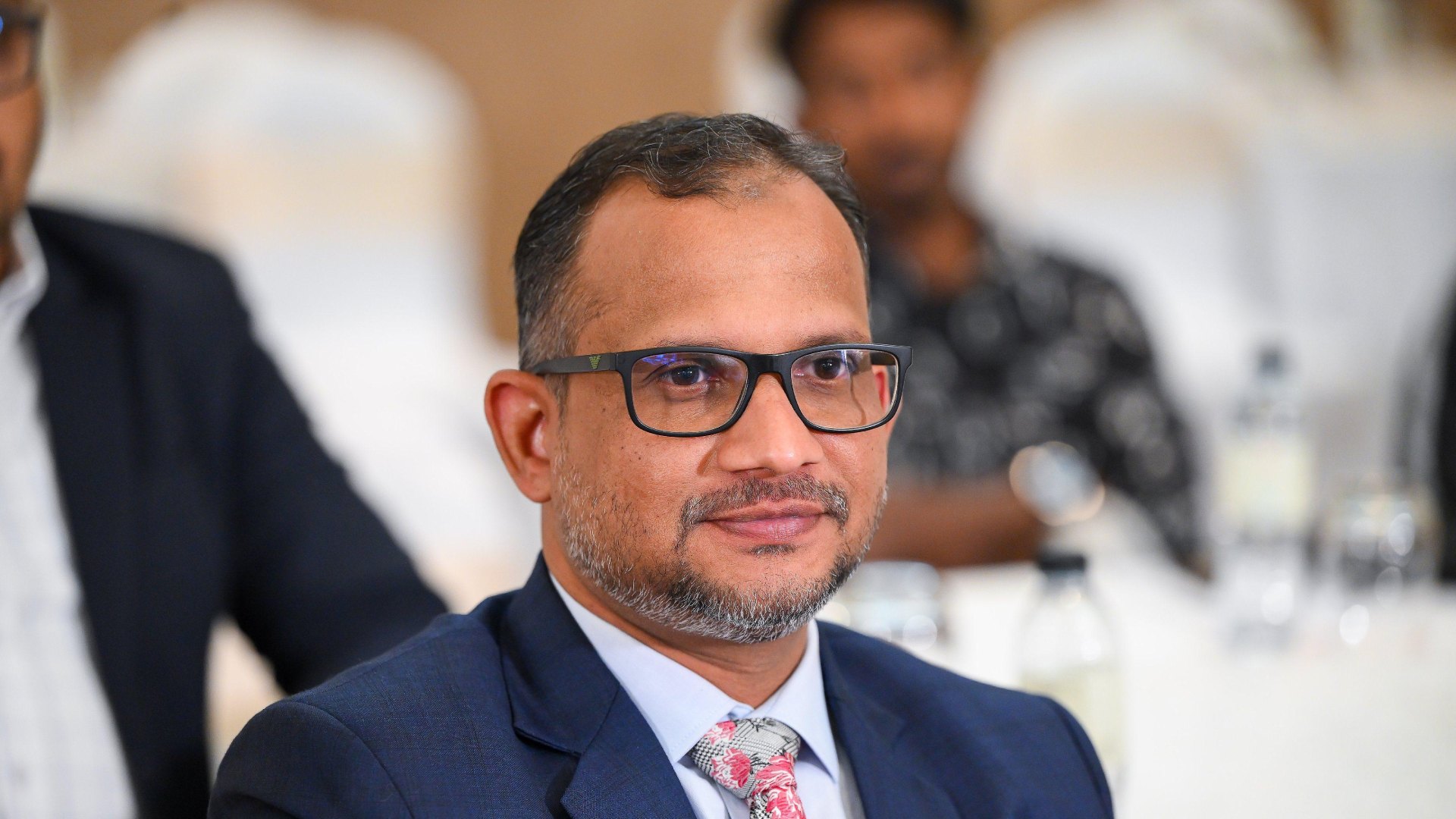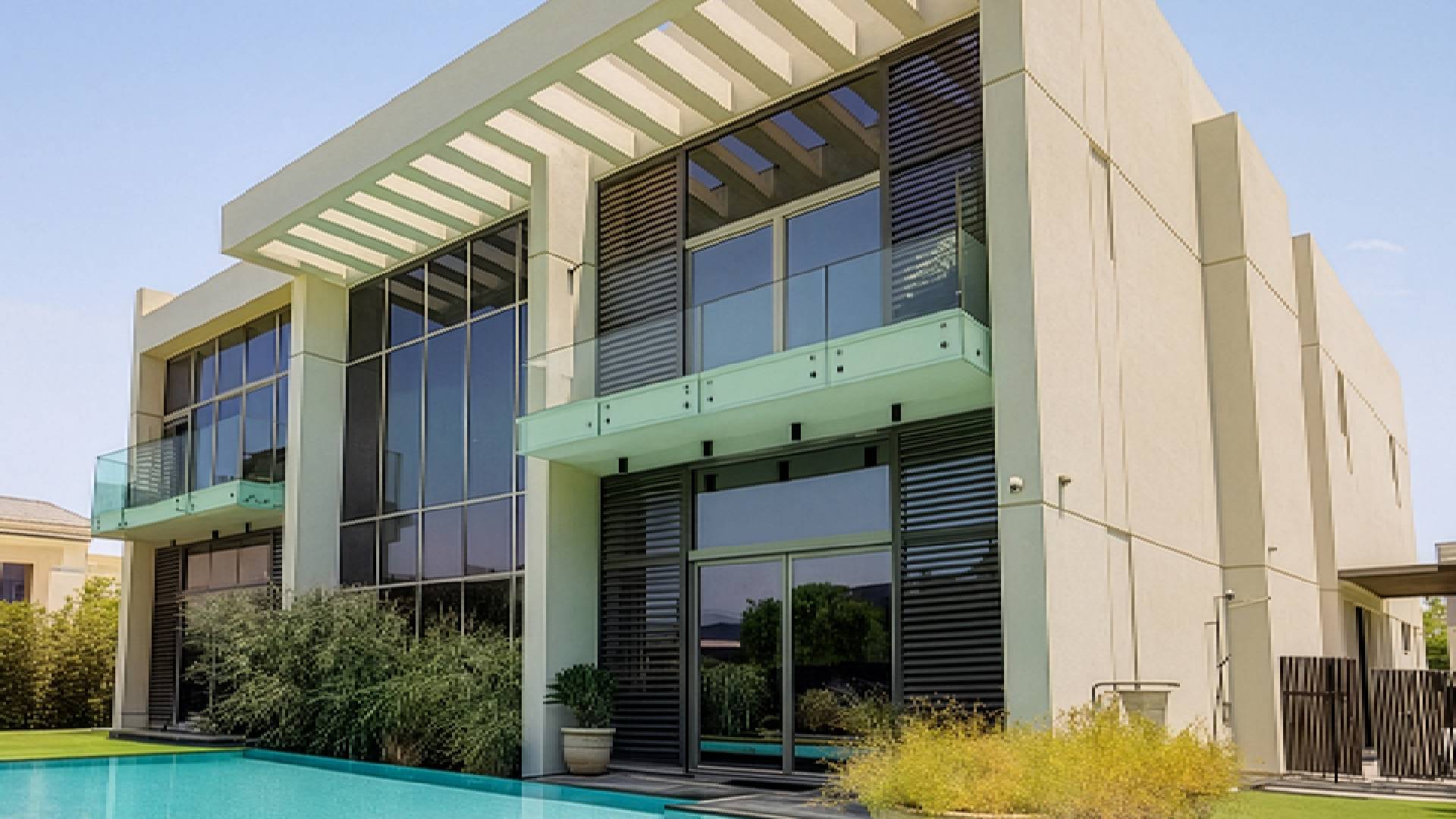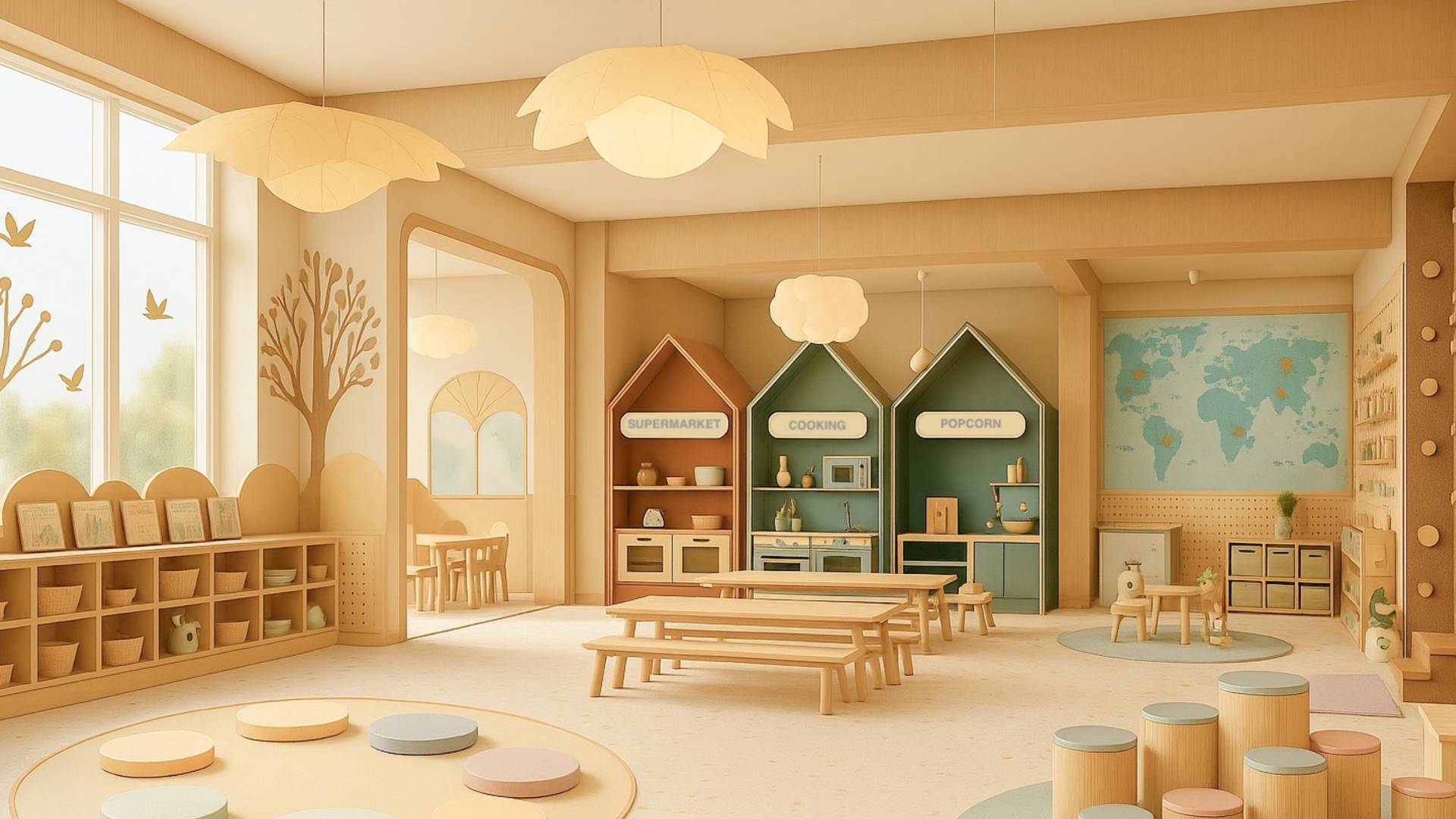Home Feature
From Boom to Brilliance: How ERP is Powering Dubai’s Real Estate Future

Article is attributed to Mr. Moossa M. Alavi, Founder & CEO of Techbot ERP
Dubai’s skyline isn’t just growing, it’s evolving into a smarter, more connected ecosystem. Behind every tower crane and transaction, technology is quietly building the backbone of the city’s real estate future. It is streamlining everything from tenant screening and property maintenance to market monitoring and online transactions, making it simpler and faster for both buyers and sellers to navigate the real estate market. In the first half of 2025 alone, the city recorded 125,538 property transactions—a 26% year-on-year increase—reaching a staggering AED 431 billion in value.
But beyond these headline numbers lies a deeper shift. As an ERP systems expert working closely with real estate stakeholders, I see a growing recognition that this rapid expansion cannot be managed using fragmented tools or legacy software. The complexity of Dubai’s real estate ecosystem now demands enterprise-grade digital infrastructure, with Property management software in Dubai becoming the operational backbone of the sector.
From Growth to Complexity: The Need for Scalable Systems
The volume of deals and investor activity speaks for itself. Nearly 95,000 investors executed over 118,000 deals, contributing AED 326 billion to the market. Among them, more than 59,000 were first-time buyers, and almost half were UAE residents—showcasing a critical shift from speculative purchases to long-term ownership. Additionally, female investors accounted for over AED 73 billion across 35,000 transactions.
As portfolios expand and buyer profiles diversify, real estate firms in Dubai face growing operational demands—from contract compliance and escrow reporting to financial forecasting and tenant lifecycle management. This is where Real Estate ERP systems come in—not as optional add-ons, but as foundational technology enabling companies to scale while remaining agile and compliant.
The Role of ERP in a Hyper-Dynamic Market
Modern ERP systems built for real estate do more than consolidate accounting or automate leases. They act as the digital nervous system of a property business—integrating finance, sales, leasing, asset management, facilities, legal, and investor relations into a single source of truth.
In Dubai’s fast-moving market, where thousands of units may be launched, sold, and managed within weeks, Real Estate ERP solutions provide:
- End-to-end portfolio visibility, allowing developers to track project performance in real time
- Integrated compliance tools, especially important in managing escrow regulations and RERA requirements
- AI-powered forecasting, helping CFOs and analysts model risk, revenue, and operational costs
- Workflow automation, from document generation to renewal alerts, which drastically reduces errors and manual intervention
Most importantly, these platforms allow executives to move from reactive management to predictive, data-driven decision-making—a vital shift in a landscape as fluid and competitive as Dubai’s, driven in part by real estate automation UAE.
Tokenisation, AI & IoT: Driving ERP Evolution
Dubai’s first digital approach to real estate is also influencing how ERP platforms evolve. The Real Estate Tokenization Project, for example, is introducing blockchain into mainstream property transactions. With property deeds tokenized and traded as digital assets, ERP systems must now integrate with blockchain networks to track fractional ownership, automate KYC/AML checks, and generate compliant audit trails.
Similarly, Real Estate ERP solutions are integrated with IoT-enabled smart buildings and digital twin models. Sensors installed across residential and commercial assets feed real-time data into ERP dashboards—enabling predictive maintenance, energy efficiency tracking, and occupancy monitoring. These integrations reduce operational costs and extend asset longevity, creating a win-win for both asset managers and tenants. This fusion of construction and real estate technology is setting new benchmarks for operational excellence.
Government Policy, Compliance, and the ERP Imperative
Dubai’s real estate surge is closely tied to progressive government policies—from long-term visas and 100% foreign ownership to relaxed freehold regulations. But with opportunity comes accountability.
Real estate companies are now expected to operate with transparency, auditability, and speed. Business operational digital platforms help meet these expectations by embedding compliance into daily operations. Contract workflows can include version control and approval hierarchies. Escrow transactions can be reconciled automatically. Licensing and regulatory deadlines can trigger alerts and renewals.
This is especially crucial for international investors who demand rigorous governance structures. A digitally mature company with an ERP-driven operation inspires more confidence than one relying on spreadsheets and disconnected software.
Operational Gains in a High-Volume Environment
The pace of development in Dubai requires companies to execute flawlessly at scale. With over 73,000 new residential units expected by the end of 2025, managing sales, handovers, payments, and post-sale support manually is not just inefficient—it’s unsustainable.
ERP systems are built to handle this scale. Sales and leasing modules can track real-time availability, link with CRM pipelines, and auto-generate buyer contracts. Financial modules are integrated with payment gateways and banks to ensure seamless transaction processing. Facilities modules manage service requests, track vendor SLAs, and handle asset depreciation.
This holistic integration allows real estate firms to deliver consistently high-quality customer experience, even as they grow rapidly.
From Cost Center to Strategic Asset
ERP systems were always seen as expensive backend tools—useful, but not transformative. That view is changing fast. In 2025, all business management software is a strategic asset that drives profitability, compliance, investor confidence, and competitive advantage.
With real-time dashboards, decision-makers no longer need to wait for monthly or quarterly reports. They can see at a glance, which projects are underperforming, where revenue is leaking, and what operational issues need immediate attention. For CFOs, CIOs, and CEOs alike, this agility is invaluable.
Future-Proofing Real Estate Through ERP
Looking ahead, Dubai’s real estate market is expected to shift from rapid expansion to smart consolidation. Price growth is projected to stabilize at 5–10% in the residential segment, while luxury and tech-enabled properties continue to outperform.
This normalization doesn’t diminish the need for speed—it increases the need for efficiency. Companies must operate leaner, respond faster to market signals, and offer better digital experiences to customers and tenants.
ERP systems, integrated with AI, blockchain, and IoT, will be the cornerstone of this evolution. They will support ESG compliance, facilitate smart contracts, streamline investor reporting, and enable new business models like fractional ownership and subscription-based leasing.
Building the Future with Digital Infrastructure
Dubai has always been a city of bold visions, but its real estate sector is no longer just about architecture and ambition. It’s about operational intelligence, systems integration, and digital scalability.
It is crucial to adopt the right digital backbone that can turn a growing real estate company into a future-ready enterprise. The firms that succeed in this next phase won’t just be the ones with the most units or the tallest towers, they’ll be the ones that manage complexity with clarity, grow sustainably, and deliver consistently through technology.
ERP systems are no longer in the background. They are the foundation of the modern real estate business—and in Dubai, powered by construction and real estate technology and real estate automation UAE, they are driving a transformation as impressive as the skyline itself.
Home Feature
RESPONSIBILITY IS THE NEW INGREDIENT IN KITCHEN DESIGN

Attributed by Selva Kumar Rajulu, Managing Director, Nolte FZE
Across the built environment, design is entering an era defined by accountability. The kitchen is at the heart of this, as one of the most resource-intensive parts of any building. From forests to finished, choices in material sourcing, production, and longevity have become a barometer of how seriously the industry treats sustainability.
In the UAE, this shift is supported by national frameworks like Net Zero 2050 and the Energy Strategy 2050, which aim to cut carbon emissions and reach 50% clean energy by 2050. Dubai Green Building Regulations, the Dubai Municipality Green Building Regulations, and the growing number of LEED-certified developments have made responsible design the new standard for both developers and manufacturers.
The heart of sustainable design
The construction sector accounts for nearly 40% of global carbon emissions, making material choice a powerful lever for change. As such, kitchens’ value is no longer judged only by finishes but also by carbon footprint, recyclability, and contribution to healthier indoor air quality. New-gen kitchens must combine aesthetics and functionality with ethical material use, low-emission production, and circularity. Every surface, fixture, and joint carries a story of how resources were sourced, processed, and designed for long-term use. This is increasingly prioritised by developers and homeowners as reports forecast demand for green buildings in Dubai alone to rise by 25% this year.
Certified sourcing as a foundation
Wood remains the backbone of kitchen manufacturing, with more than 70% of designs using wood or wood-based materials. This makes responsible forestry critical to preserving global biodiversity and maintaining the credibility of sustainable design. Certifications such as FSC® (Forest Stewardship Council) and PEFC (Programme for the Endorsement of Forest Certification) are now the international benchmarks for ethical origin of materials.
Across the region, these standards are becoming decisive factors in project specifications. Data from the FSC shows that between 2018 and 2021, the number of certified forest areas increased by 31%, a sign that sustainable sourcing is essential for climate resilience and market access.
By choosing certified products, builders and manufacturers ensure each certified kitchen contributes to global conservation efforts and reinforces the industry’s transition toward transparent, verifiable value chains.
A lifecycle approach to kitchen manufacturing
Responsibility is most effective when viewed as a continuous cycle rather than a single design choice. It begins with selecting responsibly managed raw materials and extends through manufacturing powered by renewable energy, resource-efficient logistics, and thoughtful packaging.
In production, the focus is on durability, repairability, and recyclability. Energy efficiency and material optimisation are supported by reusing by-products. For instance, Nolte utilizes wood waste for 98% of its thermal energy needs. Building on this, strategic energy management helps improve overall efficiency, reduce costs, and lower greenhouse gas emissions.Regional sourcing and digitally optimised transportation help minimise emissions. Across the sector, climate-neutral manufacturing initiatives and industry pacts aligned with the UN’s 1.5-degree target are shaping how furniture is produced and assessed. Packaging waste is transferred to certified partners for recycling, with disposal certificates issued to ensure full compliance. Even at the point of sale, there is a shift toward informed retail experiences that promote awareness of material health and lifecycle impact.
At the end of the chain lies circular design: ensuring that kitchens can be repaired, recycled, or repurposed rather than discarded. Each of these stages connects environmental care with responsible business practice, forming the foundation for a genuinely sustainable design economy.
Building value through longevity
Green buildings in the UAE are projected to grow from US$6.94 billion in 2024 to US$15.5 billion by 2032, driven by regulation and consumer demand. Within that growth, interior elements such as kitchens play a pivotal role in achieving ESG targets and maintaining compliance with evolving green codes.
Durability and quality are also financial strategies. Products built to last reduce replacement costs, limit resource consumption, and build confidence among clients. Similarly, certified sourcing strengthens brand reputation, demonstrating that sustainability reporting and craftsmanship can coexist. The result is a more resilient value chain that benefits investors, developers, and end users alike.
As design evolves, responsibility will remain its most enduring ingredient. Kitchens that respect natural resources, reduce emissions, and stand the test of time are the blueprint for a sustainable future in the built environment.
Home Feature
HOW REAL ESTATE BROKERS ARE BECOMING TRUSTED ADVISORS IN 2025

Attributed by Olga Pankina, Chief Operating Officer, Whitewill Dubai
Dubai’s real estate market crossed AED 522.5 billion ($143 billion) in transactions during 2024, a 27% jump on the previous year, according to the Dubai Land Department. This surge highlights not just rising volumes but growing complexity. Knight Frank reports that more than 40% of ultra-high-net-worth individuals in the GCC now view real estate as a key component of diversified wealth portfolios rather than simply lifestyle purchases. In response, brokers are evolving from dealmakers into strategic advisors who help clients structure long-term wealth strategies.
How brokers are adapting
Market complexitySavills data shows Dubai launched more than 70 projects in 2024, ranging from branded residences to creative payment schemes and mixed-use formats. Brokers are responding by building specialist teams that analyse developer track records, payment plan risks, and brand value premiums. They are no longer just introducing projects—they are running scenario models on potential delays, interest rate movements, and projected resale values to advise clients which launches fit their investment strategy.
Global benchmarkingWith Dubai’s rental yields averaging 6.8–7.5%, far stronger than the 3–4% seen in London or Paris, brokers are positioning themselves as comparative analysts. They present clients with side-by-side yield scenarios, factoring in currency exposure and financing costs across markets, so investors can decide whether Dubai should serve as a core yield play or be complemented with international assets for balance.
Policy and regulatory shiftsBy the end of 2024, the UAE had issued more than 158,000 Golden Visas, creating new investment dynamics. Brokers now advise clients on selecting properties that can qualify for residency, structuring ownership to maximise visa eligibility, and aligning investments with long-term family relocation plans. As new sectors like gaming expand in Ras Al Khaimah—anchored by Wynn Resorts’ 2025 opening—brokers are also flagging secondary growth corridors to investors, integrating policy insights into their advisory.
Trusted advisor model
Deloitte’s surveys show that 72% of GCC investors now expect brokers to advise on taxation, ownership structures, and exit strategies. Leading firms have broadened their offerings to include full lifecycle support: arranging financing, overseeing management and leasing, and planning exit timing. Some brokerages integrate concierge services, legal counsel, banking contacts, family office networks, so clients interact with a single advisor orchestrating the entire ecosystem.
Regional broker strategies
Dubai and Abu DhabiThe Dubai Land Department notes that 36% of all transactions in 2024 were for ready properties, signalling investor preference for immediate income-producing assets. Brokers are shifting accordingly, building ready-asset portfolios and negotiating rental agreements and management contracts alongside the sale. In Abu Dhabi, they are emphasising projects with infrastructure certainty, guiding clients toward assets that can deliver both lifestyle and reliable returns.
Saudi ArabiaVision 2030 has placed over a trillion dollars’ worth of projects into the pipeline, but execution quality varies. Brokers are acting as filters, vetting projects based on developer capability, financing security, and infrastructure backing before presenting them to clients. They frequently run due diligence with engineering consultants and local legal teams to protect investors from speculative risks while highlighting projects aligned with government priorities.
OmanCBRE recorded 8–10% price growth in Muscat and Muttrah in 2024, spurred by early foreign demand. Brokers here are counselling clients against pure speculation, instead positioning Omani assets as long-term diversification plays. They provide guidance on ownership regulations, residency eligibility, and exit options, ensuring foreign investors understand the timelines and obligations before entering the market.
Skills for modern brokers
Financial fluency is becoming a baseline skill. Brokers are expected to present internal rates of return, cash-flow projections, and exit models. In premium Dubai projects, IRRs of 12–14% are achievable under active management, but only if brokers can demonstrate scenarios clearly.
Additionally, JLL forecasts that by 2026, over half of MENA property transactions will rely on AI-driven dashboards. Many brokers are already using predictive analytics to assess submarket vacancies and rental trends. With more than 35% of Dubai’s buyers coming from abroad, cross-border fluency—tax treaties, cultural norms, legal frameworks—has become part of the broker’s toolkit. None of this is possible without network capital: relationships with developers, bankers, and regulators that give brokers the leverage to deliver better outcomes for clients.
Market insight
Knight Frank highlights a shift among GCC investors from single-unit acquisitions to multi-asset strategies. Brokers are helping clients pair prestige villas for lifestyle and residency benefits with mid-market rental units generating 6–9% yields. Others are designing “exit packages,” advising on resale timing, tenanting strategies, or even property repurposing if liquidity dries up, so portfolios remain resilient.
Forward outlook
PwC estimates that $2.5 trillion in UHNW capital will move across borders by 2030, and brokers will be positioned as the private bankers of real estate. Some firms are already experimenting with hybrid compensation models, retainers plus performance fees, to reflect this shift from transaction to long-term wealth management.
As yields in Dubai stabilise around 5–7% by 2026–27, investors will value strategy over opportunism. The brokers who thrive will be those who build trust as advisors, helping clients protect, grow, and align property with broader wealth ambitions. The industry is moving decisively away from transactions. Strategy is the new currency.
Home Feature
THE BABY ATELIER BRINGS HEALING THROUGH DESIGN: A CHILDREN’S LEARNING CENTER AT A GUJARAT HOSPITAL

Founded in 2016 by Payal Karumbiah, The Baby Atelier (TBA) has been redefining children’s spaces for nearly a decade. Holding a Master’s from Parsons School of Design and a Master of Science in Quantitative Finance, and with a professional background spanning Wall Street investment banking and the global luxury industry, Karumbiah brings a unique perspective to design. Her transition from finance to interiors was fuelled by the belief that children deserve environments that are not only functional but also psychologically supportive, and this vision continues to guide TBA’s work today. The Gujarat Learning Center is a living case study of this ethos in action.
The Baby Atelier, a purpose-led design studio specialising in child-centric interiors, has unveiled a pioneering 3,500-sq-ft Children’s Learning Center within a Gujarat hospital. This milestone project demonstrates how TBA’s psychology-driven approach to design translates seamlessly from homes into healthcare environments, shaping spaces that nurture healing, learning, and emotional wellbeing.
Where Calm Meets Creativity
Designed for young patients in long-term care, the center balances the sterility required of medical environments with the warmth and reassurance of human-centred design. Every element has been considered to support emotional regulation, agency, and comfort: muted palettes, diffused lighting, acoustic control, and tactile finishes work together to calm the senses while enabling exploration.
The result is a space that provides continuity for children whose daily lives are disrupted by illness. Beyond treatment, they are given an environment where learning, play, and social interaction continue to be part of everyday life — ensuring both normalcy and growth.
Inside the Learning Center
- Reading Nook: A quiet, sunlit retreat designed for privacy, focus, and the joy of books.
- Art Studio: Child-height supplies, pegboard walls, and dedicated display zones encourage creativity and self-expression.
- Role Play Zone: Miniature supermarkets, kitchens, and play stands that build confidence through safe, imaginative exploration.
- Study Zone: Collaborative tables, integrated technology, and world maps to support both group learning and structured lessons.
- Inclusive Play Area: Soft seating and activity blocks for gentle physical activity and inclusive interaction.
- Circle Time Space: A welcoming, barrier-free setting for shared stories, music, and group connection.
Design Psychology in Action
This project illustrates The Baby Atelier’s founding principle: children deserve environments that do more than function — they must feel intuitively supportive. By embedding principles of child psychology into every corner, the learning center demonstrates how intentional design can restore agency, confidence, and joy, even within a hospital setting.
From private nurseries to schools, public play areas, and now hospitals, The Baby Atelier continues to expand the definition of child-centred design. The Gujarat Learning Center stands as proof that design can heal, empower, and prepare children for who they are becoming.
-

 Tech News1 year ago
Tech News1 year agoDenodo Bolsters Executive Team by Hiring Christophe Culine as its Chief Revenue Officer
-

 VAR8 months ago
VAR8 months agoMicrosoft Launches New Surface Copilot+ PCs for Business
-

 Tech Interviews2 years ago
Tech Interviews2 years agoNavigating the Cybersecurity Landscape in Hybrid Work Environments
-

 Tech News5 months ago
Tech News5 months agoNothing Launches flagship Nothing Phone (3) and Headphone (1) in theme with the Iconic Museum of the Future in Dubai
-

 Tech News2 years ago
Tech News2 years agoBrighton College Abu Dhabi and Brighton College Al Ain Donate 954 IT Devices in Support of ‘Donate Your Own Device’ Campaign
-

 Editorial1 year ago
Editorial1 year agoCelebrating UAE National Day: A Legacy of Leadership and Technological Innovation
-

 VAR1 year ago
VAR1 year agoSamsung Galaxy Z Fold6 vs Google Pixel 9 Pro Fold: Clash Of The Folding Phenoms
-

 Cover Story9 months ago
Cover Story9 months agoUnifonic Leading the Future of AI-Driven Customer Engagement













